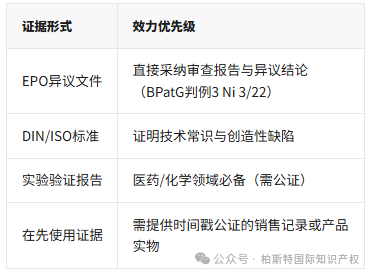- Knowledge
In depth analysis of the patent invalidation system in Germany: dual track judicial system, European hub position, and offensive and defensive strategies
As the core battlefield of European patent litigation, Germany's patent invalidation system is characterized by a dual track judicial system - patent invalidation is exclusively governed by the Federal Patent Court (BPatG), while infringement litigation is heard by regional courts, forming a globally unique "bifurcation" system. This system not only accelerates the relief of infringement, but also gives rise to complex ineffective offensive and defensive strategies. Combining its core position in the European Patent Organization (EPO) and the Unified Patent Court (UPC), the German patent invalidation system has become a "strategic fortress" that multinational corporations must carefully study.
PART .01
Legal basis: Legal grounds for patent invalidity (German Patent Law PatG § 22)
According to Article 22 of the German Patent Law (Patentgesetz), the statutory circumstances in which a patent may be declared invalid include:

Special provisions:
Utility model (Gebrauchsmuster): may be challenged in invalid procedures, but only for novelty/industrial utility (§ 15 GebrMG).
Supplementary Protection Certificate (SPC): If the basic patent is invalid, the SPC will automatically become invalid (§ 16a PatG).
PART .02
Dual track judicial system: separation of invalid procedures and infringement procedures
core process

Program features:
Technical panel: composed of 3 legal judges and 1 technical judge (such as patent examiner, engineer).
Oral hearings are mandatory: 90% of cases require court debates (with an average duration of 12-18 months).
Temporary injunction linkage: Infringement lawsuits in regional courts may be suspended due to ineffective procedures (§ 148 ZPO).
1. Core Court:
The courts of Dusseldorf, Munich, and Mannheim are hearing 80% of patent infringement cases in Germany.
2. Risk of track based system:
Infringement courts may issue injunctions quickly (averaging 3-6 months), while invalidation procedures are still ongoing;
If the patent is ultimately invalidated, the defendant may claim compensation but it is difficult to make up for market losses.
3. Comparison of Program Costs

PART .03
Deep integration with the European patent system
1. EPO Objection Procedure:
Within 9 months after the European patent is granted, objections can be filed with the EPO (at a cost of approximately 38850 euros);
If successful, the patent will automatically become invalid in Germany.
2. Invalid national procedure:
After the objection period expires, an invalidation lawsuit must be filed with the Federal Patent Court;
The EPO objection conclusion has no mandatory binding force on BPatG, but has high reference value (BPatG case X ZR 12/17).
Germany has approved UPCA: UPC will operate from June 1, 2023 and govern the validity of European patents in Germany.
Key rules:
Transition period: From 2023 to 2030, rights holders may choose to withdraw from UPC jurisdiction;
Centralized jurisdiction: Invalid UPC rulings take effect uniformly in 17 member states;
Program acceleration: The deadline for invalid litigation targets is 12 months (much faster than BPatG).
PART .04
Rules of Evidence and Attack and Defense
Burden of proof:To be borne by the invalid requester (§ 179 ZPO), the "high probability" standard must be met.
Core evidence type:

Evidence preservation:You may apply to the court to seize infringing products or production equipment (§ 140c PatG).
PART .05
Ineffective consequences and relief mechanisms
Traceability:After the invalidation judgment takes effect, the patent shall be deemed non-existent from the beginning (§ 22 (1) PatG).
Partially invalid:As a common result, BPatG may declare some claims invalid (§ 22 (2) PatG).
Cross border impact:
UPC invalidation ruling takes effect in 17 countries;
The BPatG judgment is limited to Germany, but can be enforced through mutual recognition of EU judgments.
PART .06
Guidelines for Enterprise Attack and Defense Strategies
Quick Attack Strategy:
For high-risk patents, priority should be given to attacking within the EPO opposition period (9 months);
Simultaneously file an invalidation lawsuit in UPC (if the patent has not been withdrawn).
Defense strategy:
Apply for suspension of proceedings in infringement litigation (§ 148 ZPO), waiting for the invalidation result of BPatG;
Construct a temporary protective barrier using the rapid registration system for utility models (1-3 months).
EPO Archive Tapping Potential:Thoroughly analyze the history of patent examination in the same family and identify the quality doubts of examiners;
Priority principle of notarization:Sales records, webpage snapshots, etc. must be notarized in Germany (Notar).
Automotive/Communication Industry:
Focusing on Standard Essential Patents (SEPs) and promoting cross licensing through FRAND defense;
Quoting the ETSI/IEEE standards to demonstrate obviousness.
Pharmaceutical companies:
For dosage form patents, use crystal structure databases (such as CSD) in combination to demonstrate lack of novelty;
Conduct generic drug trials using the Bolar exception (§ 11 PatG).




